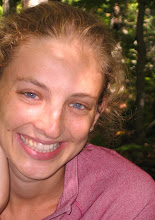 I was at the Paula Cooper gallery looking through one of Hans Haacke’s well known works, Sol Goldman and Alex DiLorenzo. Manhattan Real Estate Holdings, A Real Time Social System, as of May 1, 1971 (1971), when two women in their fifties walked into the same room and started to scrutinize the piece with vigor. Where they interested in buying the piece? Did they come to the gallery specifically to have a first hand look at the controversial piece which had previously caused the cancellation of Haacke’s exhibit at the Guggenheim Museum? The answer came several minutes later, as one of the ladies asked the receptionist what Haacke was trying to say with the piece. The quiet receptionist offered something along the lines of “exposing exploitative transactions in the real estate business in 1970’s New York,” when the woman, referring to the real estate business owner, called out indignantly: “I’m his daughter!” and left the gallery.
I was at the Paula Cooper gallery looking through one of Hans Haacke’s well known works, Sol Goldman and Alex DiLorenzo. Manhattan Real Estate Holdings, A Real Time Social System, as of May 1, 1971 (1971), when two women in their fifties walked into the same room and started to scrutinize the piece with vigor. Where they interested in buying the piece? Did they come to the gallery specifically to have a first hand look at the controversial piece which had previously caused the cancellation of Haacke’s exhibit at the Guggenheim Museum? The answer came several minutes later, as one of the ladies asked the receptionist what Haacke was trying to say with the piece. The quiet receptionist offered something along the lines of “exposing exploitative transactions in the real estate business in 1970’s New York,” when the woman, referring to the real estate business owner, called out indignantly: “I’m his daughter!” and left the gallery.The whole scene had something quite comedic about it. There was not enough of an audience to receive the lady’s exclamation with the shock it commanded, and the receptionist and I were left alone in the gallery to contemplate what had just happened. Yet the incident seemed most appropriate in relationship to the work of an artist as politically involved as Hans Haacke, giving both the receptionist and I a chance to observe live the strong reactions evoked by his works in viewers.
Conceptual artist Hans Haacke was born in Cologne in 1936 and has lived in New York since the early 1960’s. Although based in the US, Haacke has presented his work internationally, often creating provocative pieces that challenge viewers to look deeper, focusing on the concept of change to create works that are both political and sociological. In the latest show, works from various times in Haacke’s career come together in the three rooms of the Chelsea gallery. In Photographic Notes, documenta 2, 1959 (1959), a series of photographs shows middle class Germans of all genders and ages dealing with one of the first exhibitions of modern art after WWII. The images show people involved in different activities, from observing a painting to playing with a toddler, with a backdrop of works by artists such as Mondrian and Kandinsky. In these photographs, Haacke highlights the importance of the relationship between an artwork and the context in which it is received, focusing on the interactions between viewers and works by presenting the wide spectrum of ways in which the two engage with each other.
 In addition to his 1971 New York real estate critique and Photographic Notes, Haacke presents three more works. Two of them, Trickle Up (1992) and Mission Accomplished (2005), are placed between the gallery's two main rooms. A battered couch with an embroidered pillow and a ripped print of an American flag, the works reference the White House with irony and an overt critique to the Bush legacy in the United States. The third piece, one of Haacke’s earlier works, Wide White Flow (1967), offers a welcome abstract intervention amongst the politically engaged works in the gallery. In Wide White Flow, a piece of light, white fabric covers the entire floor of the gallery’s largest room. Four fans incessantly blow air that keeps the fabric floating in waves, and one can easily become mesmerized by the changing patterns of light and shadow created in this sculpture of air and fabric.
In addition to his 1971 New York real estate critique and Photographic Notes, Haacke presents three more works. Two of them, Trickle Up (1992) and Mission Accomplished (2005), are placed between the gallery's two main rooms. A battered couch with an embroidered pillow and a ripped print of an American flag, the works reference the White House with irony and an overt critique to the Bush legacy in the United States. The third piece, one of Haacke’s earlier works, Wide White Flow (1967), offers a welcome abstract intervention amongst the politically engaged works in the gallery. In Wide White Flow, a piece of light, white fabric covers the entire floor of the gallery’s largest room. Four fans incessantly blow air that keeps the fabric floating in waves, and one can easily become mesmerized by the changing patterns of light and shadow created in this sculpture of air and fabric.Overall, Haacke’s works at the Paula Cooper Gallery do not work so harmoniously with each other. Their context varies greatly, as does the media through which the concepts are explored. While the exhibit offers something of a mismatched combination of his pieces, however, it also demonstrates the wide range of the artists’ interests and questioning. And with some luck, you might run into another of the outraged interpreters of Haacke’s work.
Paula Cooper Gallery
January 11 - February 16, 2008
http://www.paulacoopergallery.com

No comments:
Post a Comment